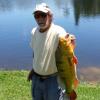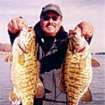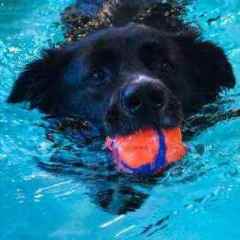Natural river fish are not usually a tough nut to crack, unlike lake fish they are almost always eating, they have to in order to deal with the current in natural rivers. If it is a just a single channel river start looking for current breaks, either man made or natural, current breaks can either be visible like a shoreline eddy, wing dam or other man made structure that restrict current flow. Or not visible, like an underwater drop off, at the front of the drop off there is a spot where fish can sit and get out of the current, it depends on the size of the structure as to how big this spot is, it may be big enough for only one fish, or it maybe big enough for a whole school, underwater boulder fields will also hold fish and are not visible depending on how deep they are. usually when you locate a current break the most active fish will be at the front of the break taking advantage of the conveyor belt that is bringing them food, but this is not a steadfast rule, if the water is rising fish tend to stick closer to structure, if the river is near flood stage fish tend to be on the slack water side of flooded structure, falling water is probably the toughest imho, fish tend to scatter more.
There is also alot to learn about current in a natural river, more or less your pattern in a given day is how are fish relating to the current, the majority of the time they are going to be in or directly adjacent to the already mentioned breaks, but sometimes they will appear to be right out in the current feeding. If you look at one common peice of current structure like a river bend the fastest water usually is towards the outside of the bend, there is usually stuff to break up current on the outside next to shore, like limbs or whole trees that have gotten pushed into the area, or dugout banks from the fast current cutting into them, often times fish will use these peices of cover as ambush points. What often gets overlooked on a structure like a river bend is the inside of the bend, that to is a current break as the water ius forced towards the outside of the bend there is a pocket created on the inside turn that is usually relatively void of any current, this might be a rather large break and under the right conditions can hold more fish than the ambush points directly across the river from it, the fish tend to be more nuetral on the inside turns but they are river fish, so you can usually entice them to bite.
So after that long rambling post which you may or may not have gotten info from, if you are trying to pattern river fish on a single channel river fish all sorts of different current breaks, figure out what type of current break the fish are holding on for that given day and look for similar types of current breaks and fish the heck out of em!



